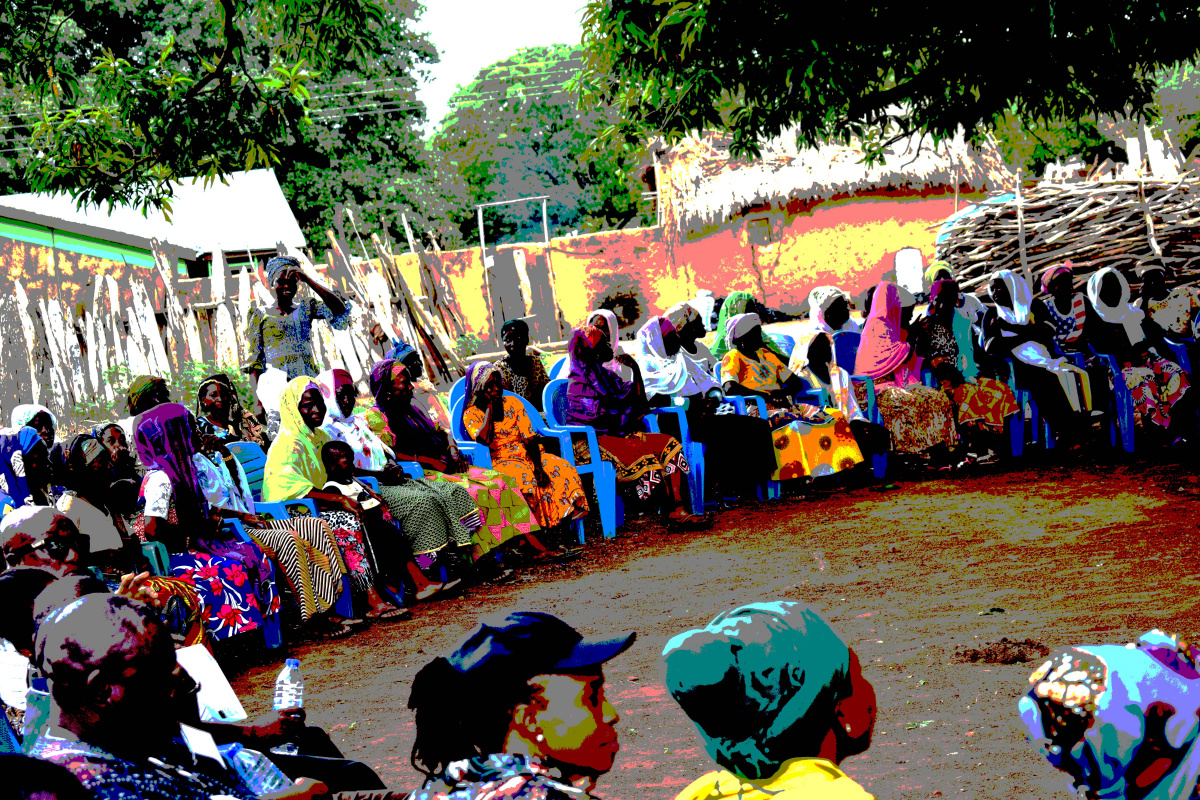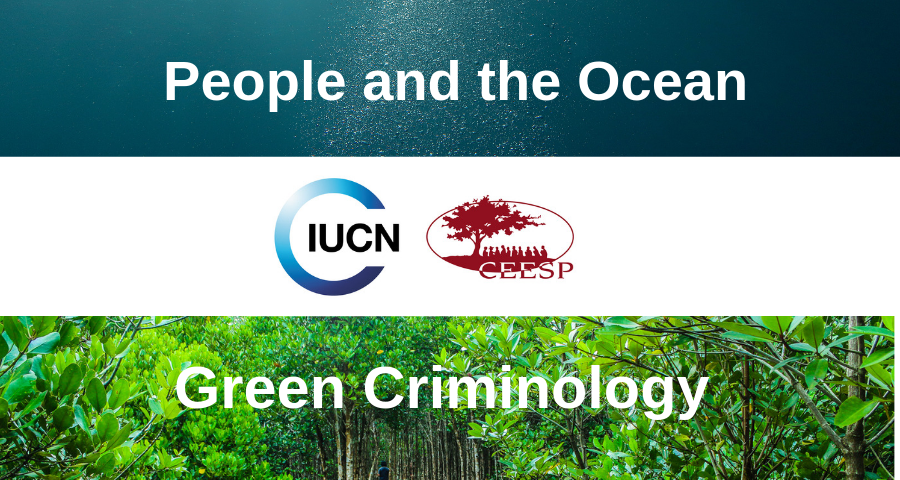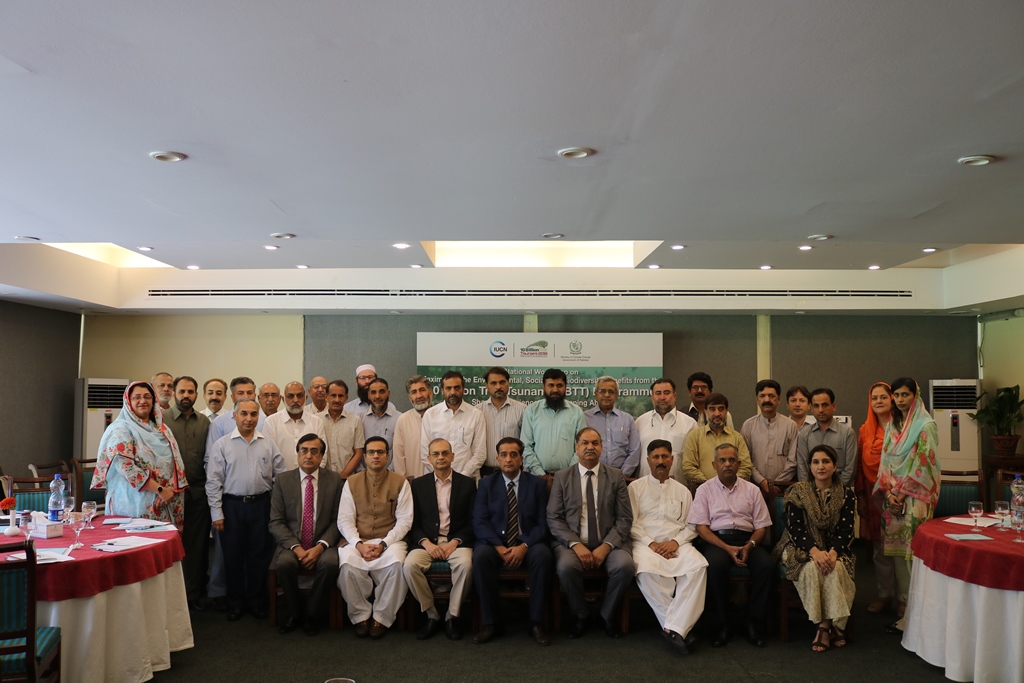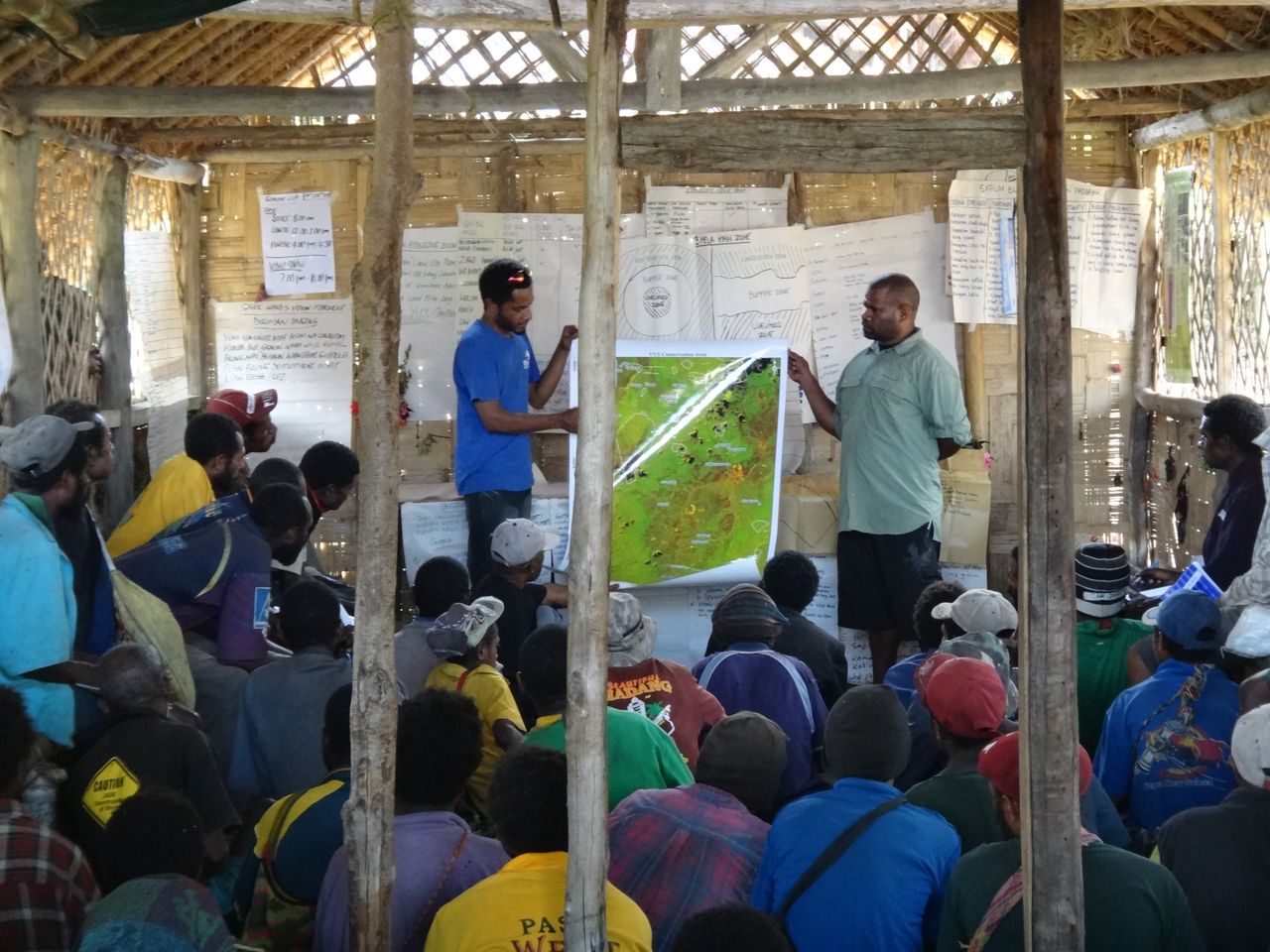What comes next for landscape governance in DRC, Ghana and Uganda?
The Stabilising Land Use project sought to improve the governance of natural resources for communities around protected areas in six landscapes across four countries in Africa. At the conclusion of the project, we checked back in with the project teams and community representatives in Democratic Republic of the Congo, Ghana and Uganda to see how things have progressed and what opportunities lie ahead.

Photo: IUCN
To understand the governance progress, and remaining gaps and opportunities from the BMU-IKI funded Stabilising Land Use (PLUS) project in six African landscapes, we assembled project teams and stakeholders in three of the countries to reflect on gains in their landscape(s).
Through country-focused, reflective web sessions, the objectives were to: (1) build awareness of governance progress made both in specific landscapes in country and through a broader lens; and (2) learn from and incorporate outside successes, needs and opportunities to cooperatively envision and take the next steps towards applying Nature-based Solutions across landscapes through actionable outcomes. Each web session (one each in Democratic Republic of the Congo [DRC], Ghana and Uganda) was led by a local facilitator with knowledge or prior involvement in the project, and included between 10-20 project participants ranging from community leaders and academics to NGOs and government officials.
Stage setting
DRC. In the Mangai landscape, the local stakeholders mobilised through the PLUS project, and a new landscape management plan for community land use was put in place. What is now needed is to reinforce action on the ground and build dialogue for more concrete policy results. There also remains a need to validate the management plan with all the stakeholders, vulgarize to strategic partners and increase the involvement of the governance working groups (GWGs) in decision-making and action. In addition, links between the GWG and local policy to national level plans like AFR100 need to be established.
Ghana. A landscape management strategy was defined and agreed to in each of the project landscapes, but how does this link to what comes next? This vision is the starting point. The question remains as to how to maintain the governance progress achieved over the previous four years. The strategies are embedded into national policies but actual implementation and financial resources are still limited.
Uganda. In the two Uganda PLUS landscapes, questions remain around how to actualize and deliver the objectives of the management plans built or strengthened by the project. How to move the governance platform forward and show contributions to government objectives as well as tying it to agreed objectives of the stakeholders on the ground remains to be understood.
 Photo: IUCN
Highlights from each country group
Photo: IUCN
Highlights from each country group
 Photo: IUCN
Photo: IUCN
To open the web dialogues, each group was posed a similar set of questions about the successes, obstacles and pathways forward after the PLUS project. These questions were followed by a facilitated discussion of specific issues in each landscape. The following are highlights from the responses of the participants.
DRC. Through this webinar, it became clear that the needs and opportunities for considering the next phases of the PLUS project in the Mangai landscape should be primarily approached through the implementation of the management plan, including discussions at the national level for concrete actions. The focus of these actions should be on:
- Securing funding for landscape restoration;
- Opening access to nurseries, and agricultural and fisheries inputs;
- Rehabilitating roads and infrastructure for the development of ecotourism and cultural tourism;
- Community sensitisation and support to the GWG to sustain the project's achievements;
- Improving integration of marginalised groups (women and indigenous peoples); and
- Participatory demarcation of the conservation area created during the PLUS project.
Ghana. Participants in Ghana emphasised the importance of aligning the interests of Metropolitans Municipal and District Assemblies to natural resources management issues, and gaining their commitment to good natural resource governance. This will bring tangibility to natural resource utilisation and compete favourably with other projects of political interest.
Also the ability to demonstrate with evidence (data), compelling cases regarding the environment, will show funders how the landscape is positively transitioning as well as helping to identify land use issues. Use of remote data on deforestation, for example, will also be useful for engaging duty bearers and promoting action.
The key to progress is on-going collaboration among stakeholders. In addition, there remains the need for further education and understanding on the part of members on their roles and responsibilities within existing governance structures, and the sensitisation of local authorities on natural resource issues. The opportunity to engage with existing partners and projects should be further explored. There are multiple partners such as A Rocha Ghana in the Mole landscape, Codesult Network in the Wassa Amenfi landscape or REDD+ programmes spearheaded by the Forestry Commission who are already supporting income generation activities and, with more support, will make an immerse impact if coupled with PLUS progress.
UGANDA. The top three priorities identified by participants in Uganda are: restoring the physical and legal integrity of local forest reserves and central forest reserves; restoring fragile ecosystems (such as steep slopes, riverine forests, wetlands, rivers and streams, rangelands); and promoting community forests and community wildlife conservation areas.
The implementation of the plans developed through the PLUS project were stifled by lack of adequate resources, COVID-19 restrictions and local politics. Nonetheless, the restoration of degraded forests on private land and forest reserves is the most important intervention that participants wish to implement immediately. To this end, blended financing (government, donors, private sector and local community as sources of finance) is highly regarded as a strategy to enable implementation of the priorities. This will require incentivising the private sector to invest in restoration enterprises and demonstrating the economic value of forests to government – thereby increasing resource allocation and building support for communities interested in establishing community forests and community wildlife conservation areas.
Conclusions
It is clear that the many diverse stakeholders in the project landscapes benefitted considerably from the new or enhanced landscape governance structures resulting from the PLUS project. Looking ahead, and building from this momentum, four common areas of action came to the forefront.
First: Identify and address gaps in implementation of policy, funding, etc.;
Second: Reinforce successes through action on the ground and continued momentum of governance working groups;
Third: Link the progress made through this project with other projects and initiatives in the landscapes; and
Fourth: Implement actions from the landscape strategies and continue to build links to broader local and national policy and goals.



